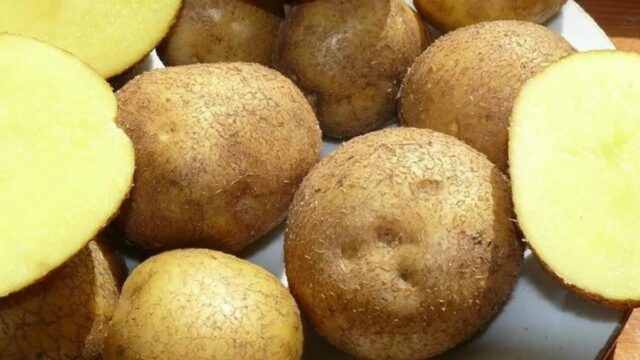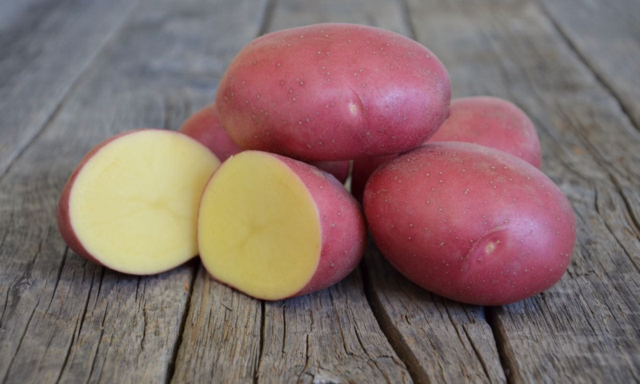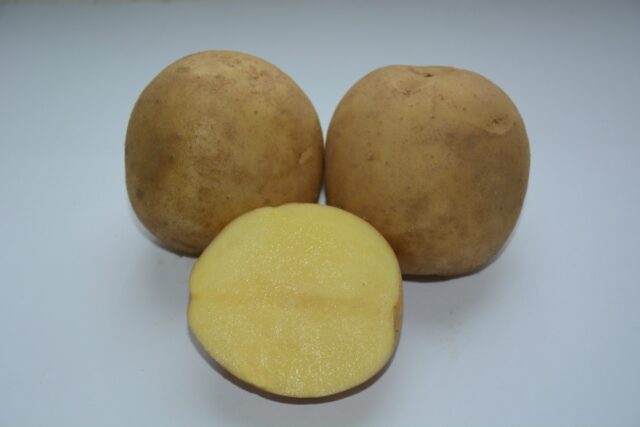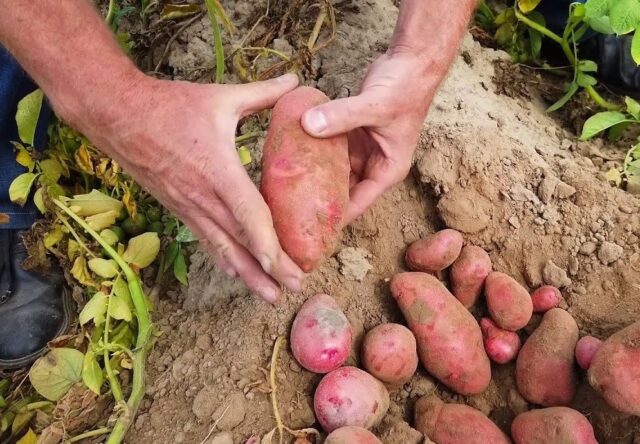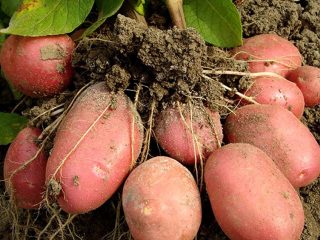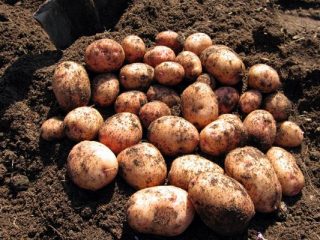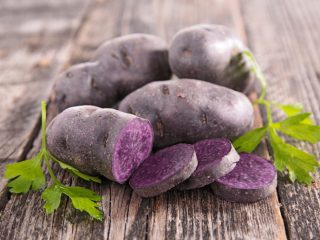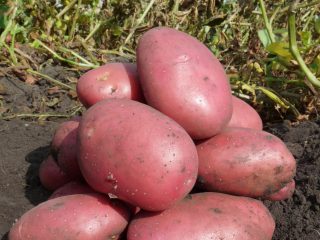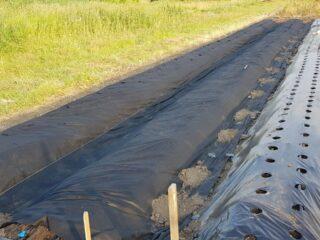Content
Potatoes, the flesh of which is yellow in color, are in high demand among gardeners and consumers, and this is no coincidence. After all, it is characterized by excellent taste, appetizing appearance, versatility of use and moderate boiliness. But this type of vegetable also contains a large amount of carotene, which determines its color. And this component is known to be responsible for eye health, skin condition and is a powerful antioxidant. But among all the variety, there are the best varieties of potatoes with yellow flesh, as confirmed by numerous reviews.
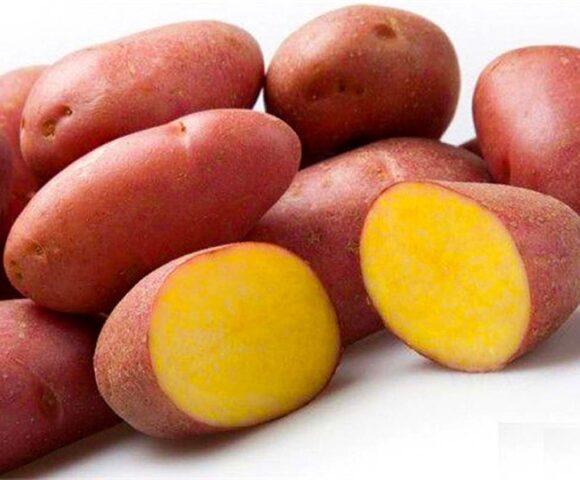
Varieties with yellow flesh are distinguished by high consumer properties
Names of the best varieties of potatoes with yellow flesh
To decide on the type of crop to choose, it is necessary to study the characteristics of each of them separately. Since vegetable varieties differ in terms of growing season, productivity and starch content.
Zekura
German table potato variety with yellow flesh. Work on its removal was carried out by employees of the company Solana GmbH & CO KG. It was entered into the State Register in 1997. Recommended for cultivation in the central and northern regions.Belongs to the category of mid-early, the duration of the growing season is 85-90 days.
Bushes of medium height. The root system is well developed, producing up to 20 potatoes per season. The average fruit weight is 59-150 g. The peel of the oblong fruits is smooth, yellow in color, with superficial eyes. The marketability of this type is at the standard level, and the shelf life is about 98%.
Zekura is classified as culinary type B. Excellent for purees, baking, frying, first courses and salads. The yellow pulp is medium crumbly. The starch content in it reaches 13-18.2%.
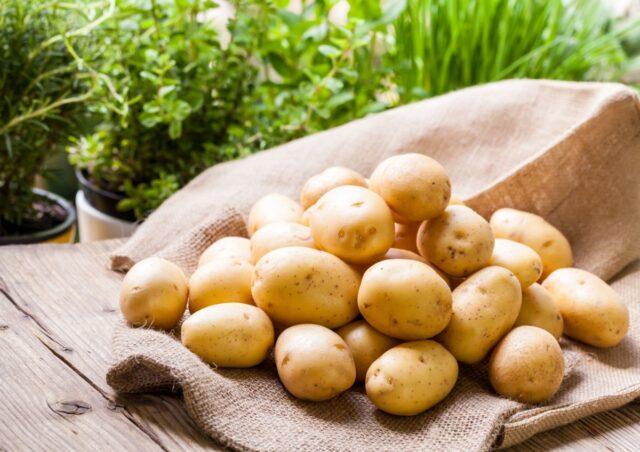
Zekura is resistant to cancer and nematode
Adretta
A German table variety that was bred more than two decades ago. It is characterized by upright growing bushes with large dark green leaves, the height of which reaches 50 cm. Adretta is valued for its high, stable yield, even in seasons unfavorable for the crop. It is a mid-early crop; the harvest ripens 60-80 days after the sprouts appear.
The tubers are oval with a yellow mesh skin. They have numerous eyes, the depth of which is average. The weight of potatoes is 120-140 g. The yield is 260-450 kg per hundred square meters. Adretta is recommended for cultivation in the Middle Volga, Far Eastern and Western Siberian regions. The starch content in its fruits is 13-18%. This species belongs to culinary type C.
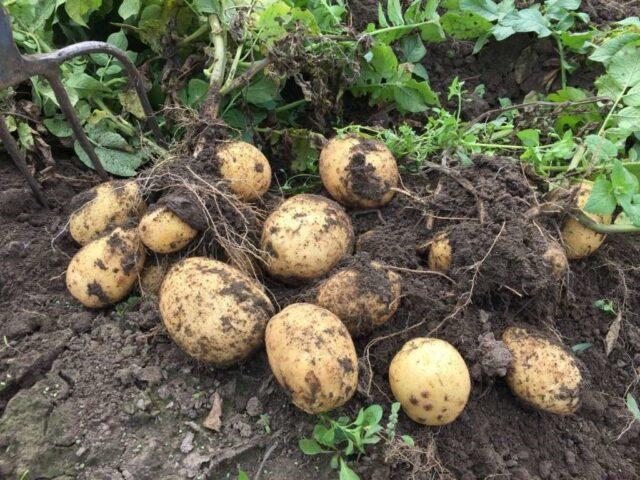
Adretta is ideal for making purees
Meteor
Russian early variety with yellow flesh and skin. The duration of its growing season is only 60-70 days. Characterized by tall bushes of intermediate type with semi-erect shoots. The height of the plant reaches 55-60 cm.Meteor is characterized by resistance to low temperatures, so it is suitable for early planting even in unheated soil.
The tubers are oval-round with a smooth surface. Their average weight is 102-147 g. Under the bush, 10-12 large potatoes are formed per season. They are almost all the same size. The depth of the eyes is average or less.
This type of culture has good taste. The pulp is slightly watery, not mealy and boils moderately.
Meteor is suitable for:
- salads;
- first courses;
- baking;
- frying;
- stuffing;
- boiling.
The starch content in tubers is 12-14%. This type can be used to make puree, but it turns out grainy.
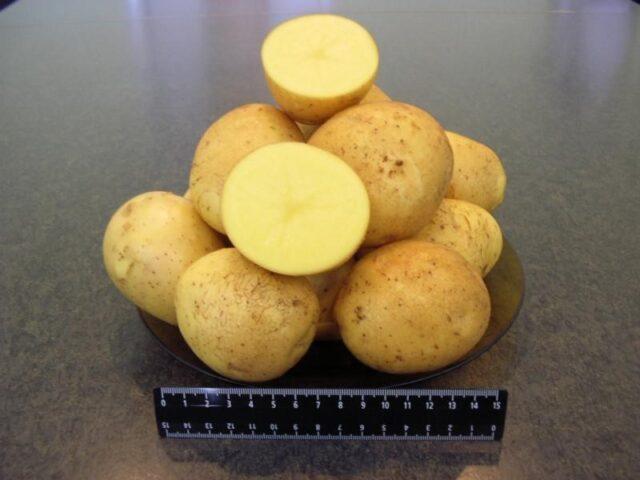
Potato Meteor is resistant to degeneration
Santana
Dutch mid-early variety with yellow flesh. Included in the State Register in 2006. Shows high productivity in the Central, Northwestern and Central Black Earth regions.
Santana forms low bushes, 40-45 cm high, of intermediate type. The tubers are elongated-oval with small superficial eyes. The average weight of tubers is 96-168 g. The taste of potatoes is Santana, and the keeping quality is 92%. The starch content is 13.4-17.3%.
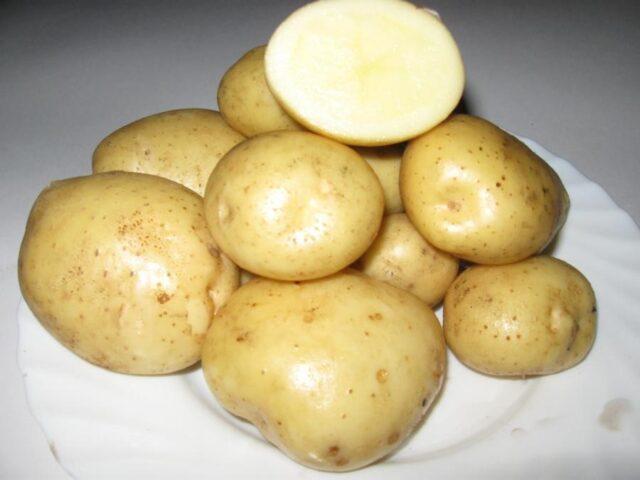
Santana's yield is 164-384 kg per hundred square meters
Symphony
This Dutch potato variety belongs to the medium-late category. The duration of the growing season is 100-120 days. Symphony shows high productivity in the central region. The species was included in the State Register in 1996.
Important! Symphony is demanding on soil fertility.
Tall bushes with erect shoots.Under each of them, 8-11 oval tubers with an average weight of 70-140 g are formed per season. The peel is red, smooth. The pulp is yellow, moderately dense, not mealy. The taste of Symphony is excellent. Potatoes are suitable for mashed potatoes and other dishes. The yield is 200-460 kg per hundred square meters, but in some years it can reach up to 612 kg.
Marketability is 81-92%, keeping quality is 95%. Starch content varies between 13-19%.
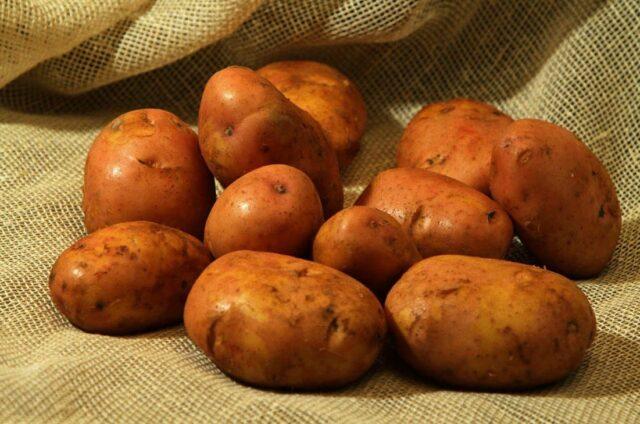
Symphony is not suitable for soups and salads, as it becomes overcooked
Anosta
This yellow-fleshed potato variety is the result of Dutch selection. It belongs to the category of early ripening. The duration of the growing season is 80-95 days. Characterized by bushes of medium height with densely leafy shoots. The root system is well developed; during the season it forms 8-10 oval tubers weighing 71-134 g. The pulp is slightly watery, not mealy. The starch content in it is 14-16%. Anosta potatoes are ideal for frying and frying.
This species is sensitive to late blight on tops. Therefore, it is recommended to harvest before the widespread spread of the disease. But the species does not suffer from cancer and nematodes.
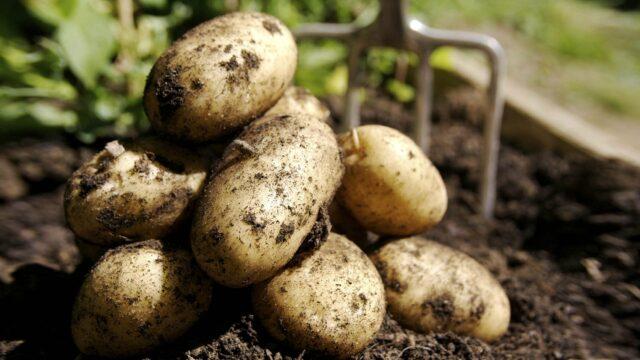
Anosta has good tuber uniformity
Tuleevsky
This Russian mid-early potato variety has yellow flesh and is suitable for industrial and private cultivation. Valued for its excellent taste and high yield even in unfavorable years for the crop.
Plant with medium growth rate, shoots are semi-erect. Up to ten large tubers are formed under each bush per season. The average weight of potatoes is 200-300 g, which is an order of magnitude greater than that of other types of crops. The species is ideal for long-term storage; its shelf life is 98%.
The tubers are round, with a thin, dense yellow skin. The surface is rough, the depth of the eyes is insignificant. The yield of the variety can reach up to 458 kg per hundred square meters. The starch content of this potato is in the range of 13.7-16.8%.
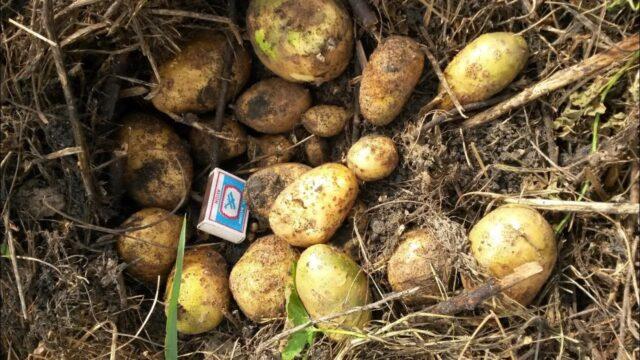
Tuleyevsky shows high performance only when fertilized with organic matter.
Dnepryanka
Ukrainian early-ripening potato variety with yellow flesh, which is capable of producing two harvests per season. The duration of the growing season is 65-70 days. The plant is medium-sized with erect shoots. Sandy soil is preferable for this variety.
Dniepryanka's tubers are round-oval, weighing 89-186 g. The color of the peel, like the pulp, is yellow. The surface of the potatoes is smooth, the depth of the eyes is average. The starch content of the Dnepryanka variety varies between 14.8-15.1%. Potatoes are softened, so they are ideal for mashing. Productivity is 210-520 c per hectare.
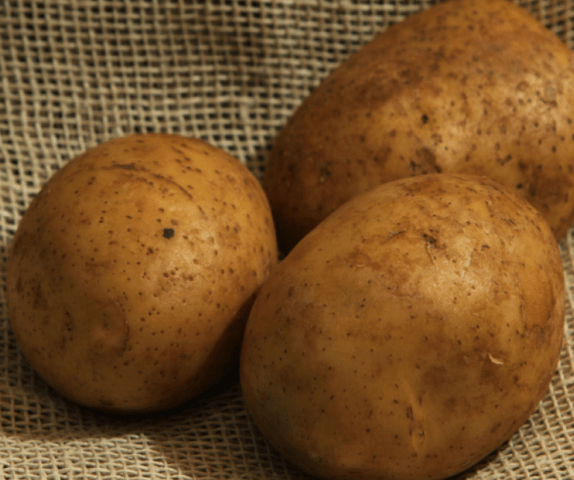
Dnepryanka potatoes preserve their consumer properties for up to nine months
Breeze
This mid-early potato variety, which is yellow inside, is the result of the work of Belarusian breeders. Its growing season is 70-80 days. Breeze was included in the State Register of Russia in 2009.
The plant is medium-sized, 45-50 cm high. The stems are thin, the leaves are large, dark green. The variety is undemanding to soil composition and responds well to mineral fertilizers.
The tubers are oval-round with a smooth skin and small eyes. Their surface, like the flesh, is yellow in color. The weight of the fruit ranges from 100 to 150 g. The yield of Breeze potatoes ranges from 169-395 kg. The number of tubers under the bush is 8-12 pieces.Keeping quality is about 97%.
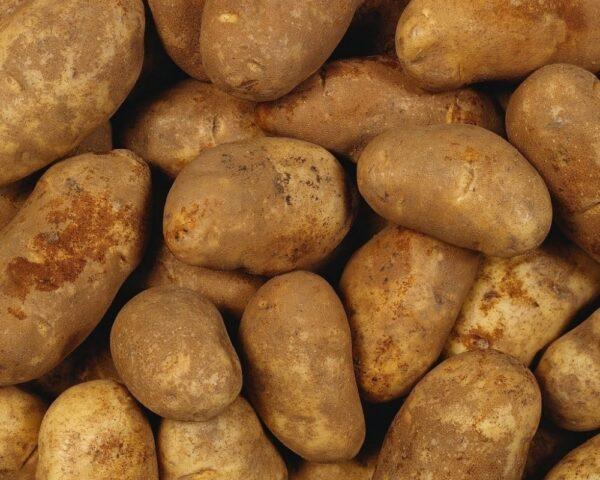
Potato Breeze is susceptible to nematode
Nevsky
A Russian variety that was bred in 1976, but still remains relevant. Valued for its stable yield and excellent taste. It is characterized by increased drought resistance, as it develops a powerful root system capable of extracting moisture from the deep layers of the soil.
Nevsky's tubers are oblong-rounded, smooth, with superficial pinkish eyes. The peel, like the flesh, is yellow. Starch content is 10.4-14.8%.
The bushes near Nevsky are low with numerous shoots. 8-15 tubers are formed under each of them. The species easily adapts to any climate. Its yield reaches 60 tons per hectare.
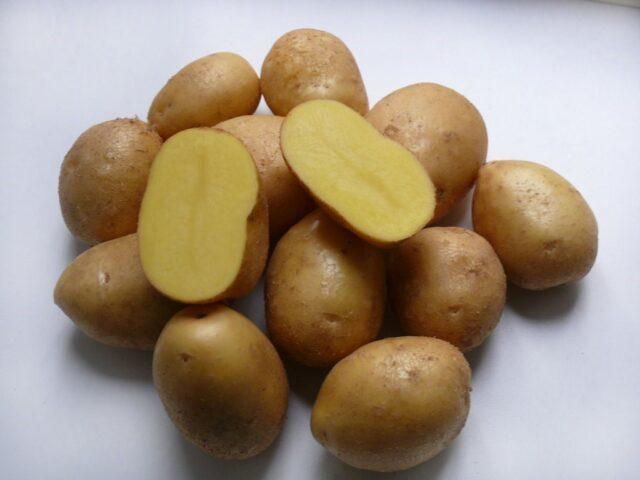
The marketability of Nevsky with timely harvesting is 90-95%
Giant
According to the photo and description, this variety of yellow potatoes fully lives up to its name. The plant is tall with a powerful root system. During the season, each bush produces 8-13 tubers, weighing 104-143 g. Giant is a medium-ripening variety. The harvest ripens in 115-120 days from the moment of emergence.
The tubers are oval-round with a smooth skin of a light beige color. The yellow flesh of the Giant is moderately dense, has a pleasant consistency, and is slightly watery. The variety is suitable for any type of processing, slightly boiled. The starch concentration in it reaches 15.9−18.9%. Productivity ranges from 290-424 kg per hundred square meters, but can reach up to 613 kg.
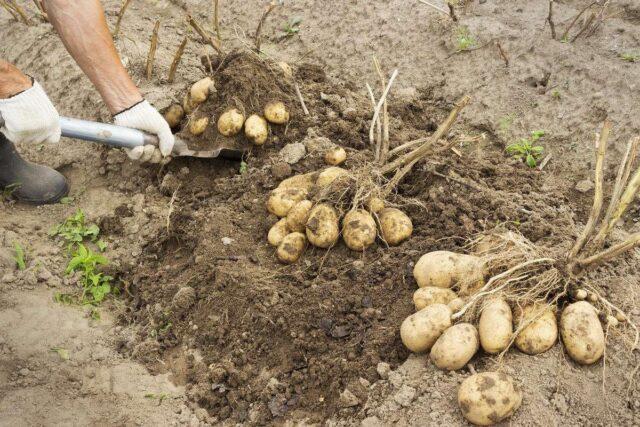
Giant potatoes can only be planted in well-warmed soil.
Queen Anne
A German potato variety with yellow flesh that is distinguished by its early ripening.It was included in the State Register not so long ago, namely in 2015, but has already managed to gain wide popularity.
Potatoes Queen Anne are characterized by medium-sized spreading bushes, under each of which 6-16 large tubers are formed. The average fruit weight is 84-137 g. Queen Anne's tubers are elongated-oval, regular in shape, with a dense, smooth yellow skin. The eyes are small and almost invisible. The yield of the species is 495 kg per hundred square meters.
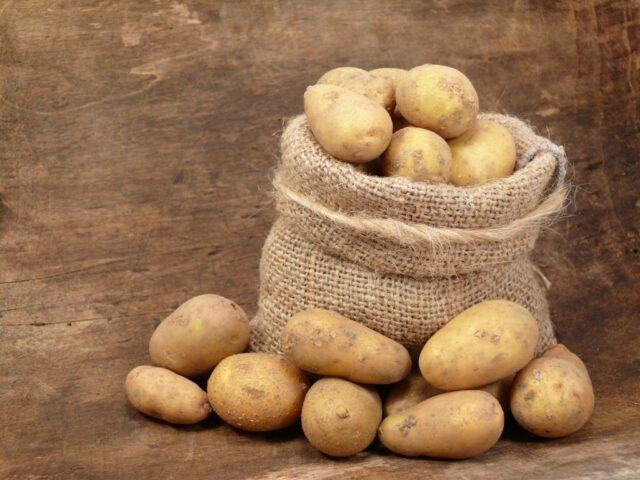
Queen Anna potatoes can be grown for an early harvest on the 45th day of the growing season
Vector
A mid-season Belarusian variety with yellow flesh, characterized by excellent taste and high yield. Vector potatoes tolerate drought well and show maximum productivity on peat-bog and soddy-podzolic soils.
The growing season of this potato is 90-110 days. Its tubers are round-oval with a smooth red skin. The depth of the eyes is insignificant. The yield of this yellow-fleshed variety is 170-263 kg per acre. Under each bush, 10-14 tubers are formed per season, weighing 92-143 g. The keeping quality of the variety is 95%.
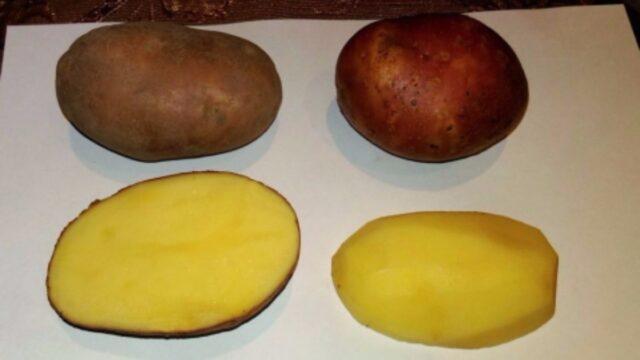
Potato Vector belongs to the culinary type VS
Lasunak (Lasunok)
A time-tested Belarusian late-ripening potato variety. The duration of its growing season is 80-120 days. Lasunok is prized for its excellent taste. However, it can be achieved by growing the variety on sandy soil.
The species is characterized by tall, powerful, upright growing bushes, 60-65 cm high. The average number of tubers in a nest is 10-12 pieces. Small specimens are rare among them. The fruits are round, slightly elongated, with a mesh skin.The depth of the eyes is average. The average fruit weight is 150-200 g. The starch content is 15-22%.
This species belongs to culinary type C. It is suitable for making chips, side dishes, dry mashed potatoes, and freezing. The variety with yellow flesh has good cooking properties.
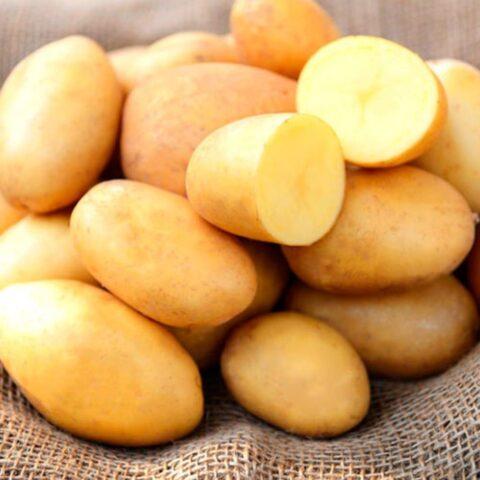
Lasunka exhibits rare berry formation
Santa (Sante)
Dutch variety with yellow pulp for table use with medium ripening period. Santa is suitable for mechanical collection. The duration of the growing season of the variety is 85-90 days. The plant is medium-sized, 45-50 cm high, upright. Under each bush, up to 20 medium-sized oval potatoes are formed per season.
The taste of Sante potatoes is good. During cooking, its yellow flesh retains its hue and does not darken. Suitable for salads, first courses, fries, frying, but purees based on it are not uniform.
The skin of the tubers is yellow and smooth. The eyes on it are barely noticeable. The starch level in Sante fruits is 10-14%. Productivity is 570 kg per hundred square meters, and keeping quality is 92%.
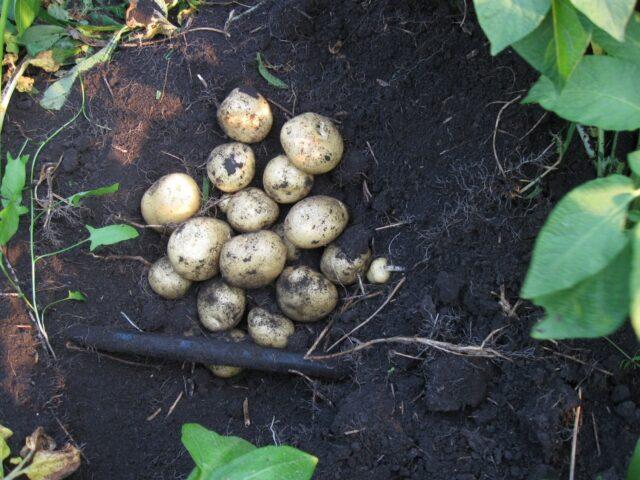
Potatoes Sante are zoned in the northern and central regions
belongings
Another Belarusian potato variety with yellow flesh and late ripening. Shows high productivity in the central regions. Included in the State Register of Russia in 2002. The plant is medium-sized, semi-spreading. The variety is suitable for growing in different types of soil and responds well to fertilizing.
The tubers are oval with a smooth yellow skin. Under the bush, from 10 to 14 pieces are formed, with an average weight of 94-138 g. The duration of the growing season of the Scarb potato is 90-100 g, and the yield is 253-411 kg per hundred square meters.The marketability of litter is 84-99%, and keeping quality is 88-99%. The belongings belong to the culinary type B. Its starch content is in the range of 10.8-17.7%.
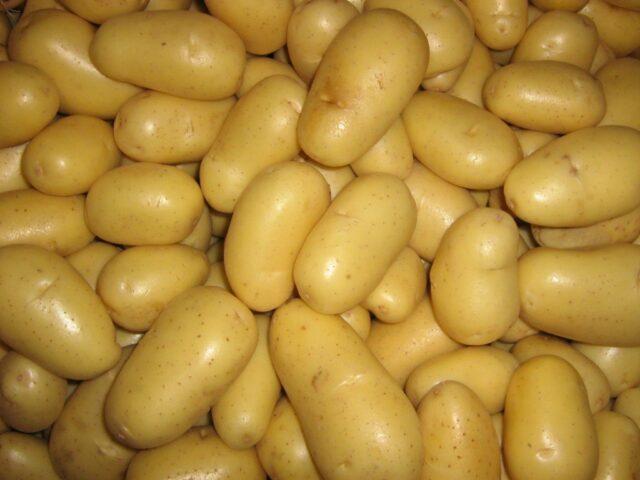
Before planting, Scarba seed tubers require mandatory germination.
Lorch
This Russian yellow potato variety was developed in 1922, but still remains relevant due to its high yield, which it shows in different types of soil. Lorch is a mid-late type of culture. Harvesting can be done 100-120 days after emergence.
The plant is tall, powerful, densely leafy, 55-60 cm high. The variety is characterized by long flowering and rare berry formation. Under each bush, 12-16 round-shaped tubers are formed per season. The peel is smooth, but there is slight peeling at the top of the fruit.
The average weight of Lorch's tubers varies between 90-120 g. Its yield is 250-350 kg per hundred square meters. The yield of marketable tubers is 88-92%.

Yellow-fleshed Lorch potatoes respond poorly to drought
Impala
Dutch early potato variety with yellow flesh. It was included in the State Register of Russia in 1995. The plant is tall with 3-4 straight growing shoots. Characterized by an accelerated pace of development. The duration of its growing season is 40-60 days, so in the southern regions two crops of Impala potatoes can be harvested per season.
The tubers are large, rounded and elongated. The average weight of the fruit varies between 88-150 g. The peel is smooth, it, like the pulp, is yellow. It produces 10-12 potatoes under each bush. Productivity 367 kg per hundred square meters.
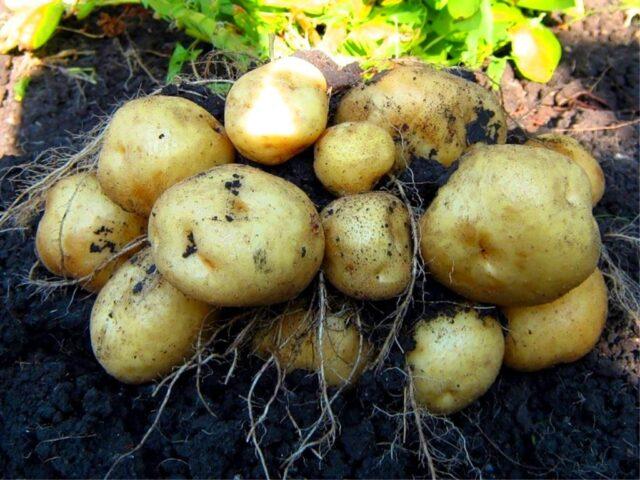
Impala potatoes do not respond well to temperature changes
Kolobok
A famous Russian variety that is distinguished by its yellow flesh.These potatoes tolerate transportation and long-term storage well and are suitable for mechanical harvesting. Kolobok is a mid-season crop; its growing season lasts 85-100 days. The plant is tall or medium tall, upright, of intermediate type.
The root system is well developed; per season it forms 15-18 tubers, weighing 95-120 g. The peel is dense, rough. The pulp is not watery, slightly mealy, and does not darken during cooking. The taste of Kolobok potatoes is excellent. It is suitable for pureeing, boiling, baking, frying. The starch content of Kolobok is 11.4-14%. The yield of marketable tubers is 87-97%.
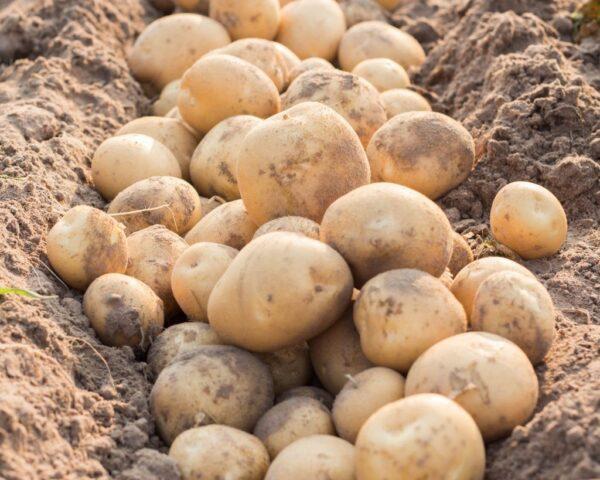
Kolobok belongs to culinary type C
Other varieties of yellow inside potatoes
In addition to the yellow-fleshed varieties listed, there are other types. They are also characterized by versatility, excellent taste and appetizing appearance. Therefore, when choosing a suitable type, you should also pay attention to them.
Other types:
- Vineta;
Vineta is suitable for early harvest
- Labella;
Labella is characterized by the evenness of the fruits
- Belarusian Lily;
Lily is great for frying, salads
- Rosara.
Rosara is resistant to spring return frosts
Conclusion
Having studied the best varieties of potatoes with yellow flesh, choosing the right one will not be particularly difficult. In this case, you need to focus on the ripening period, taste and application features. After all, each type has its own strengths and weaknesses.
